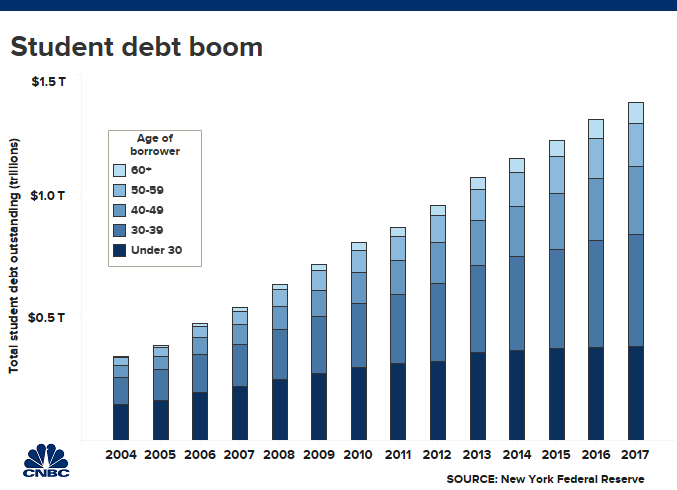College graduates will soon be hit with their first student loan bill
aywan88 | E+ | Getty Images
We’re heading into the season for turkey dinners, Christmas trees, presents and, for recent college graduates, their first student loan bill.
Students who were handed their diplomas in May or June will find the half-a-year grace period on their federal student loans come to an end this month or next. You’ll want to figure out that due date as soon as possible.
“The number one mistake is missing the first payment,” said Mark Kantrowitz, the publisher of SavingForCollege.com. “After six months, the borrower has forgotten about their loans.”
You can remind yourself of your federal loan details and which company is servicing them at the National Student Loan Data System. For any private, state or institutional loans, check your credit report.
You should then compile a list of all your loans, when they’re due, the monthly amount and lender. “Borrowers need to get organized,” Kantrowitz said.
You can also sign up for automatic payments to avoid being late. Many lenders offer a small interest rate deduction as an incentive for doing so, Kantrowitz said.

If you’re overwhelmed by what you owe, and worry you won’t be able to afford it, you should reach out to your lender, said Betsy Mayotte, president of The Institute of Student Loan Advisors, a nonprofit that helps student loan borrowers with free advice and dispute resolution.
“There are many options available to make the payment affordable and avoid credit dings and collection costs,” Mayotte said. (If you have federal loans, that is. Private lenders set their own terms).
There are ways, for example, to postpone your payments through so-called deferments and forbearances.
Borrowers should first ask whether they qualify for an economic hardship deferment, because under that option interest won’t accrue on your loans. (There are also interest-free deferments for cancer patients now.)
If a forbearance is your only option, proceed with caution. Your loans will rack up interest quickly, and when you’re finally forced to start repayment you’ll find your balance has ballooned.
A forbearance typically lasts a year, and borrowers can use the option up to three times. However, you can request a partial forbearance and keep up with at least the interest payments during the break, Kantrowitz said.
“This will prevent your loan from growing larger during the forbearance,” he said.
If your difficulty repaying your student loans is unlikely to come to an end any time soon, you might want to enroll in an income-driven repayment plan, which caps your monthly payment at a percentage of your income. Some monthly bills wind up totaling $0.
Try not to be tempted by a smaller monthly bill if you can afford to pay more, Mayotte said. “You are going to want to pay as much as you can monthly to reduce overall interest costs,” she said.
You should check if you qualify for public service loan forgiveness — it’s complicated, but you might if you work for the government or a nonprofit. And there are also forgiveness options listed on Mayotte’s website.
Carefully read the requirements for any forgiveness plan you hope to pursue, Mayotte said.
“I’ve seen quite a few borrowers who just assumed if they worked in public service their loans would go away after 10 years,” she said. “All the forgiveness programs have specific rules you must follow to qualify.”
More from Personal Finance:
Three states with the highest income taxes
How much you can save toward retirement in 2020
This is what it takes to get into a top college
